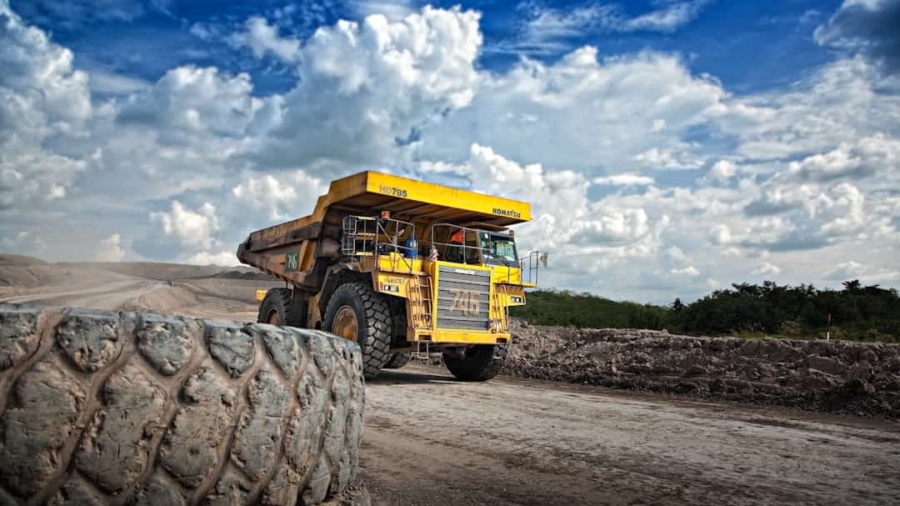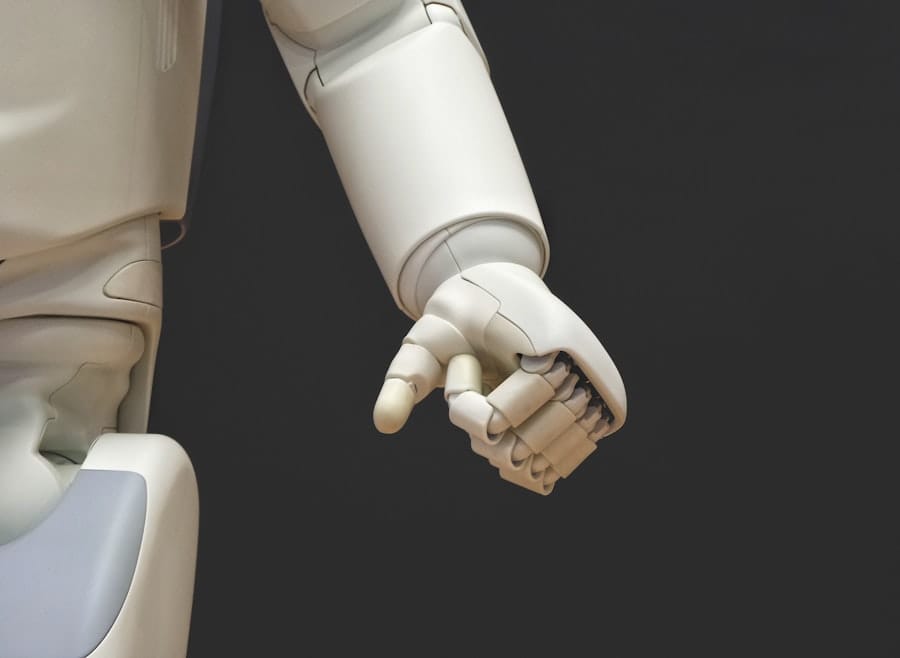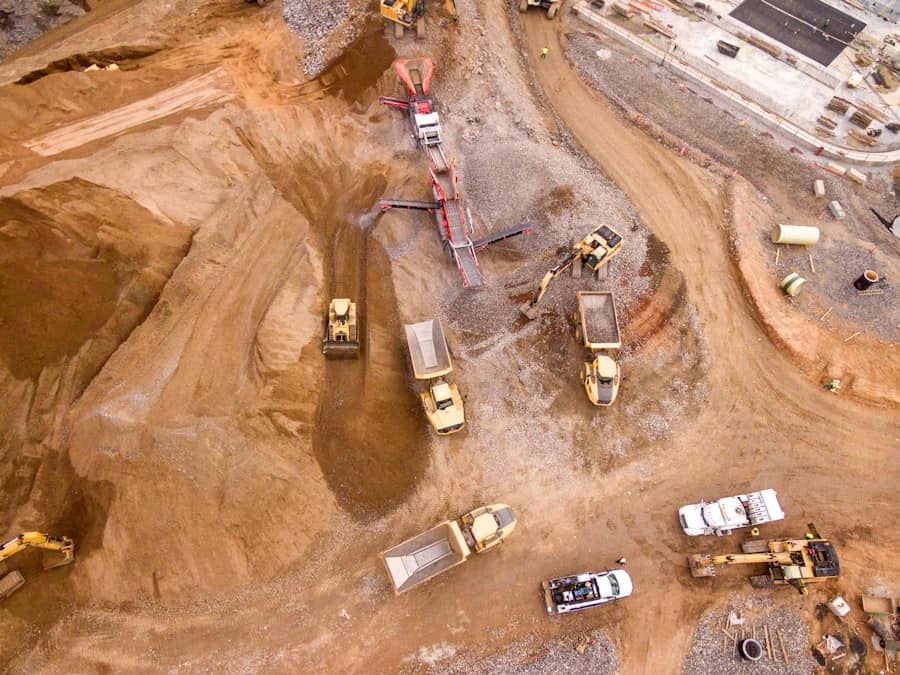The concept of space mining has transitioned from the realm of science fiction into a tangible area of research and development, driven by the increasing demand for resources on Earth and the potential wealth that lies in our solar system. As terrestrial resources dwindle and the environmental impact of mining becomes more pronounced, the allure of asteroids and other celestial bodies as sources of valuable materials has gained traction. Space mining involves extracting minerals and other resources from asteroids, moons, and planets, with the aim of utilizing these materials for various applications, including construction, energy production, and even life support systems for future space missions.
Robotics plays a pivotal role in the feasibility of space mining operations.
These robots can be designed to operate autonomously or under remote control, equipped with advanced sensors and tools to navigate and manipulate the environment. The integration of robotics into space mining not only enhances operational efficiency but also opens up new possibilities for exploration and resource extraction beyond our planet.
Key Takeaways
- Space mining and robotics go hand in hand, with robotics being essential for extracting resources from celestial bodies.
- Robotics offer advantages such as increased efficiency, reduced risk to human life, and the ability to operate in harsh environments in space mining.
- Challenges in space mining, such as extreme temperatures and lack of atmosphere, can be overcome by using robotics designed for these conditions.
- Examples of robotic technologies used in space mining include autonomous rovers, drilling systems, and robotic arms for sample collection.
- Potential resources to be mined from asteroids include water, precious metals, and rare earth elements, which could be valuable for future space missions and sustainability on Earth.
Advantages of Using Robotics for Space Mining
The deployment of robotic systems in space mining offers numerous advantages that significantly enhance the viability and efficiency of such operations. One of the primary benefits is the ability to conduct operations in environments that are inhospitable to humans. For instance, robots can be designed to withstand extreme temperatures and radiation levels found in space, allowing them to operate continuously without the need for life support systems.
This capability enables longer missions and reduces the logistical challenges associated with sending human crews into space. Moreover, robotics can improve precision and reduce the risk of human error during mining operations. Advanced robotic systems equipped with artificial intelligence (AI) can analyze data in real-time, making decisions based on environmental conditions and resource availability.
This level of automation not only increases productivity but also minimizes waste, ensuring that valuable resources are extracted efficiently. For example, robotic drills can be programmed to optimize their drilling patterns based on geological surveys, maximizing yield while minimizing disruption to the surrounding environment.
Challenges of Space Mining and How Robotics Can Overcome Them
Despite its potential, space mining is fraught with challenges that must be addressed to make it a reality. One significant hurdle is the vast distances involved in reaching asteroids or other celestial bodies. Current propulsion technologies limit our ability to travel quickly and efficiently in space, making it costly and time-consuming to transport equipment and personnel.
Robotics can mitigate this issue by enabling remote operations; once a robotic mining system is deployed, it can operate independently for extended periods without the need for constant human oversight. Another challenge is the unpredictable nature of space environments. Factors such as microgravity, dust storms on planetary surfaces, and varying gravitational forces can complicate mining operations.
Robotic systems can be engineered with adaptive capabilities to respond to these challenges dynamically. For instance, robots equipped with advanced mobility systems can navigate uneven terrain or adjust their operations based on real-time feedback from onboard sensors. This adaptability is crucial for ensuring that mining operations can continue smoothly despite unforeseen circumstances.
Examples of Robotic Technologies Used in Space Mining
Several robotic technologies are currently being developed or proposed for use in space mining operations. One notable example is NASA’s Resource Prospector mission, which aims to explore the Moon’s polar regions for water ice and other resources. The mission will utilize a suite of robotic tools, including rovers equipped with drills and spectrometers to analyze soil samples.
These rovers will be capable of autonomously navigating the lunar surface while conducting scientific experiments and gathering data on resource availability. Another promising technology is the use of autonomous drones for asteroid exploration. These drones can be equipped with advanced imaging systems to map asteroid surfaces and identify potential mining sites.
For instance, the European Space Agency’s Hera mission plans to deploy a pair of small spacecraft to study the binary asteroid system Didymos. By utilizing drones equipped with high-resolution cameras and spectrometers, scientists hope to gather critical data that will inform future mining efforts.
Potential Resources to be Mined from Asteroids
Asteroids are believed to harbor a wealth of resources that could be invaluable for both Earth-based industries and future space exploration endeavors. One of the most sought-after materials is platinum group metals (PGMs), which include platinum, palladium, and rhodium. These metals are essential for various applications, including electronics, catalytic converters, and jewelry.
Some estimates suggest that a single asteroid could contain enough PGMs to significantly impact global markets. In addition to PGMs, asteroids may also contain water ice, which is crucial for sustaining human life during long-duration space missions. Water can be converted into hydrogen and oxygen through electrolysis, providing both fuel for spacecraft propulsion and breathable air for astronauts.
Furthermore, other materials such as nickel, iron, and rare earth elements could be mined from asteroids, offering potential solutions to resource shortages on Earth.
Economic and Environmental Impact of Space Mining with Robotics
The economic implications of space mining are profound, with the potential to create new industries and job opportunities both on Earth and in space. The extraction of valuable resources from asteroids could lead to a reduction in dependence on terrestrial mining operations, which often come with significant environmental costs. By shifting some resource extraction activities off-planet, we could alleviate pressure on Earth’s ecosystems while simultaneously tapping into a virtually limitless supply of materials.
However, the environmental impact of space mining must also be carefully considered. While extracting resources from asteroids may seem less harmful than traditional mining practices on Earth, there are still potential risks associated with disrupting celestial bodies. For instance, altering an asteroid’s trajectory through mining activities could have unforeseen consequences for its orbit or stability.
Therefore, it is essential to develop responsible practices that prioritize sustainability in space resource extraction.
Future of Space Mining and Robotics
The future of space mining is poised for significant advancements as technology continues to evolve. As robotic systems become more sophisticated, we can expect increased autonomy and improved decision-making capabilities in mining operations. The integration of AI and machine learning will enable robots to analyze vast amounts of data quickly, optimizing resource extraction processes in real-time.
Moreover, international collaboration will play a crucial role in shaping the future landscape of space mining. As nations recognize the potential benefits of extraterrestrial resource extraction, partnerships between governments, private companies, and research institutions will likely emerge. These collaborations could lead to shared technological advancements and regulatory frameworks that ensure responsible practices in space mining.
Ethical Considerations in Space Mining with Robotics
As we venture into the realm of space mining, ethical considerations must be at the forefront of discussions surrounding this emerging industry. One primary concern is the potential for exploitation of celestial resources without adequate oversight or regulation. The Outer Space Treaty of 1967 established that outer space should be used for peaceful purposes; however, it does not provide clear guidelines on resource extraction or ownership rights.
Additionally, there are questions about the long-term implications of altering celestial bodies through mining activities. The preservation of asteroids and other celestial bodies as scientific sites is essential for future research endeavors. Striking a balance between resource extraction and conservation will require careful planning and international cooperation.
In conclusion, as we stand on the brink of a new era in space exploration and resource utilization, it is imperative that we approach space mining with a sense of responsibility and foresight. The integration of robotics into this field offers exciting possibilities but also necessitates thoughtful consideration of ethical implications and environmental impacts. By fostering collaboration among stakeholders and prioritizing sustainable practices, we can pave the way for a future where space mining benefits humanity while preserving the integrity of our solar system.
A related article to How Robotics Enhances Space Mining for Resources on Asteroids can be found in the list of links provided. The article titled “Best Software Testing Books” offers valuable insights into the world of software testing and quality assurance, which are essential components of developing robotics technology for space mining operations. To learn more about software testing and its importance in the field of robotics, you can check out the article here.
FAQs
What is space mining?
Space mining is the process of extracting valuable resources from celestial bodies such as asteroids, moons, and planets in outer space.
What are the potential resources available for mining on asteroids?
Asteroids are rich in resources such as water, precious metals like platinum and gold, rare earth elements, and other valuable minerals.
How can robotics enhance space mining for resources on asteroids?
Robotics can enhance space mining by enabling autonomous exploration, excavation, and extraction of resources from asteroids. Robots can perform tasks in the harsh environment of space without the need for human intervention.
What are the advantages of using robotics for space mining?
Using robotics for space mining reduces the risk to human life, increases efficiency, and allows for continuous operation in the challenging conditions of space. Robots can also be designed to withstand the extreme temperatures and lack of atmosphere in space.
What are some of the challenges of using robotics for space mining?
Challenges of using robotics for space mining include the development of advanced autonomous systems, the need for reliable communication with robots in space, and the design of robots that can operate in microgravity and vacuum conditions.
How does space mining contribute to space exploration and resource utilization?
Space mining can provide essential resources for future space missions, such as water for life support and fuel production, as well as valuable materials for manufacturing in space. This can reduce the reliance on Earth for resources and enable sustainable space exploration and colonization.



